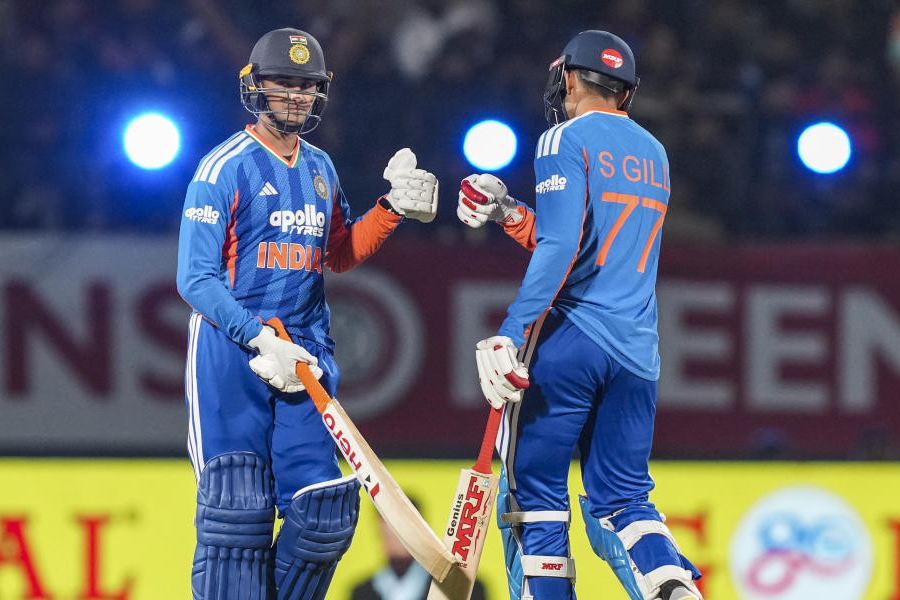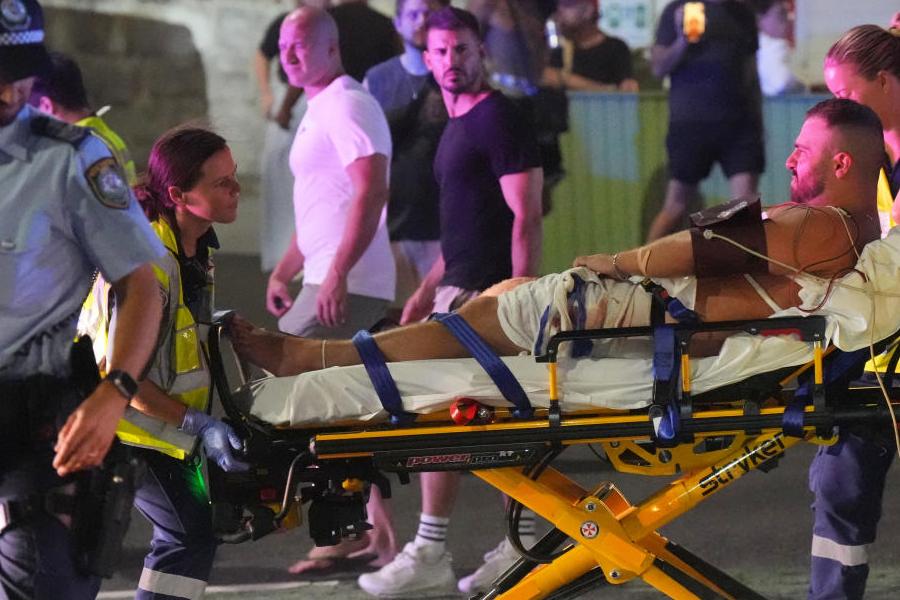 |
| Soldiers display a shoulder-fired rocket launcher, a tripod-mounted multiple grenade launcher and an AK-47 with under-barrel grenade launcher on Wednesday. Picture by Prem Singh |
 |
| A jawan with an anti-material gun on Wednesday. (PTI) |
New Delhi, Oct. 22: For an army that is so caught up with putting down militancy, the 7.62-mm Dragunov Sniper Rifle with its long barrel is an uncharacteristic toy.
The weapon that can be completely dismantled and stuffed into a bag has to be ferried by two soldiers and must be mounted in a strategic location for the sharpest shot in the unit.
The deadly Dragunov that kills from long distance is fit for the likes of Carlos the Jackal, the legendary assassin-for-hire immortalised in works of fiction. On display here at an infantry institution, it is off-beat, a counter-point to all the other weapons that go into waging war in Kashmir, waging war over Kashmir.
“It is intended to ‘take out’ VIP targets, for example the leader of a group,” says the young captain supervising the exhibition.
Unlike the Dragunov, the Israel-made Travos Anti-Material Gun that has a choice of two barrels, is what the army finds of greater use in its undeclared war in Kashmir. It is intended to blast “dhoks”, country-made bunkers of stone and mortar in which militants take shelter in the mountains. Its ammunition is said to be capable of piercing through sheaths of metal and concrete and blasting the innards.
The army is buying about 1,500 anti-material guns with more than four lakh rounds of ammunition for around Rs 300 crore.
The army’s foremost fighting arm, the infantry, is equipping all its battalions with modern weapons, three-quarters of which is being inducted to counter insurgency in Kashmir.
Purchases and equipping for the infantry’s 350-plus battalions have begun with the Cabinet Committee on Security last month approving a shopping list worth Rs 3,046 crore for the armed forces.
The infantry is about 34 per cent of the 10-lakh strong army. All 23 regiments of the infantry along with the counter-insurgency Rashtriya Rifles battalions in Kashmir make up about 40 per cent of the force. The director general (infantry), Lt Gen. K. Nagraj, said here today that the modernisation was being carried out across the board and new weapons were being inducted also by Rashtriya Rifles units and special forces.
Many of the new toys for the infantry are clearly intended for use in the army’s counter-insurgency and counter-infiltration posture.
Nagraj, who allowed some of the equipment to be exhibited at a display here, said the focus was on procuring weapons and force-multipliers that would augment firepower, communication, recce and surveillance and mobility.
A fifth category of procurement was personal clothing for self-protection such as nuclear, biological and chemical protection suits and high-altitude gear and suits that have been necessitated in large numbers since the Kargil war of 1999.
But for the anti-tank weapons, a bulk of the equipment would be used by Ghatak platoons being raised in every infantry battalion.
Ghataks would be a platoon that would make up the cutting edge of a battalion’s assault force. Every battalion had been ordered to raise a Ghatak platoon.
In the counter-infiltration grid, frontline battalions had begun using unattended (unmanned) ground sensors along the Line of Control. These include passive infrared sensors, magnetic sensors and seismic sensors said to be capable of detecting movement at 400 metres.
Some of the equipment like anti-tank flame throwers mounted on four-wheelers are for more conventional warfare — like resisting an armoured charge in the plains.
The 30-mm automatic grenade launcher — another prized possession for infantry battalions in close-quarters combat — that can fire up to 400 grenades per minute over 1,700 metres is much in demand from soldiers in the frontline. Another simple yet effective device that affords greater personal protection is the under-barrel grenade launcher (UBGL) mounted into an AK-47 assault rifle. The army expects to have 3,000 UBGLs.











